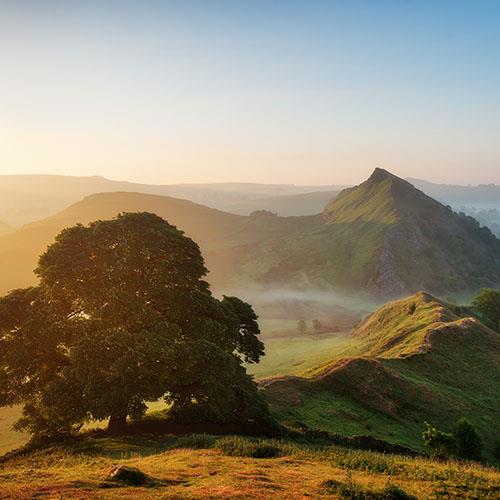


Peak District National Park, the lower portion of the Pennines range that separates north west England from Yorkshire, is known for its uplands, hills, valleys, and gorges. The Dark Peak area is known for its grit sandstone landscapes while the White Peak's land is comprised of limestone. The valleys in between are picturesque moorlands that are great for hiking and walking, and the cliffs near the valleys are home to popular caves as well. One in three Britons live within an hour of the Peak District, making it one of the most popular tourist destinations in the country.
North West England is the second-largest urban area in England, which includes Manchester, the UK`s third-largest city; Liverpool, on the River Mersey, known for its seafaring traditions and The Beatles; Blackpool, one of the most popular seaside resorts in England; and Chester, perhaps the best-preserved walled city in Britain.
Beautiful North East England consists of such cities such as Durham, which boasts a 1,000-year-old old town; Newcastle-upon-Tyne, developed around an old Roman settlement and once one of the most important shipbuilding centers in the world; and Sunderland, which grew around the 7th-century Monkwearmouth-Jarrow Abbey.
Yorkshire is the quintessential Northern English travel destination. Yorkshire is known for its scenic landscapes, especially at the North York Moors, the Peak District National Park, and the Yorkshire Dales National Park. It is also known for its bustling cities such as York, Sheffield, Leeds, and Bradford.
The English Midlands are often overlooked but are alluring to travelers. The region is full of history; many cities were founded over two millennia ago, and are some of the oldest cities in England. The Midlands was the birthplace of the Industrial Revolution, helping to cement the British Empire`s global influence.
The history of East Anglia (Norfolk, Suffolk, and Cambridgeshire) is vivid and rich; the oldest structures still standing in England, dating from the Bronze Age, are located in East Anglia. A number of large, ornate former monasteries-turned-cathedrals dot Cambridgeshire, from Peterborough to Fenland and the Isle of Ely.
South East England is a large and geographically diverse region, much of which sits in the Thames River Valley, and here you can experience such sights as the New Forest, the Chiltern Hills, and the White Cliffs of Dover, in addition to Blenheim Palace, Windsor Castle, Canterbury Cathedral, and the list goes on.
South West England is filled with exciting sights such as Stonehenge, the world-famous prehistoric stone circle; the Roman-era hot springs of Bath; the coasts of Dorset and east Devon; and the tin mines that dot the coasts of Devon and Cornwall. All of these popular attractions are UNESCO World Heritage Sites.
The Yorkshire Dales National Park is where you can find a slice of rural life that`s only a short drive away from the hustle and bustle of big cities. The beautiful Dales are characterized by their sweeping green hills, locally-owned farms and small villages, and humble houses and estates built from Yorkshire stone.
The Peak District National Park, with millions of visitors each year, is one of the UK's most popular tourist destinations. It is known for its uplands, hills, valleys, and gorges, carved from limestone and grit sandstone. The valleys in between are picturesque moorlands that are great for hiking and walking.
The Lake District, located in Cumbria in England`s northwest, is a mountainous region famous for its forests, waterfalls, its literary traditions, and of course its lakes. The Lake District National Park, spread out across 911 square miles, is the United Kingdom`s most-visited national park, and a UNESCO World Heritage Site.